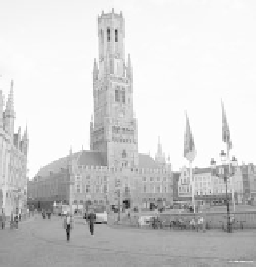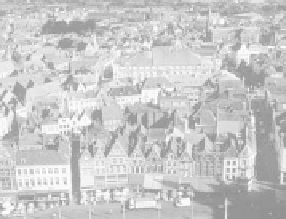Travel Reference
In-Depth Information
The rebels identified potential French spies by demanding they
repeat two words—
schild en vriend
(shield and friend)—that only
Flemish locals (or foreigners with phlegm) could pronounce. They
won Flanders its freedom. Cleverly using hooks to pull knights
from their horses, they scored the medieval world's first victory
of foot soldiers over cavalry, and of common people over nobility.
The French knights, thinking that fighting these Flemish peasants
would be a cakewalk, had worn their dress uniforms. The peasants
had a field day afterward scavenging all the golden spurs from the
fallen soldiers after the Battle of the Golden Spurs (1302).
Geldmuntstraat, a block west of the square, has fun shops and
eateries. Steenstraat is the main shopping street and is packed with
people. Want a coffee? Stop by the Café-Brasserie Craenenburg
on Market Square. Originally the house where Maximilian of
Austria was imprisoned in 1488, it's been a café since 1905 (daily
7:30-24:00, Markt 16).
bell Tower (belfort)
Most of this bell tower has stood over Market Square since 1300.
The octagonal lantern was added in 1486, making it 290 feet high.
The tower combines medieval
crenellations, pointed Gothic
arches, round Roman arches,
f lamboyant spires, and even a
few small flying buttresses (two-
thirds of the way up).
Try some Belgian-style fries
from either stand at the bottom
of the tower. Look for the small
metal model of the tower and
the Braille description of the old
town. Enter the courtyard. At
the base of the bell tower, find the posted schedule of free caril-
lon concerts (normally June-Sept Mon, Wed, and Sat at 21:00;
Oct-May Wed and Sun at 14:15, sit on benches in courtyard—a
great experience). There's also a WC in the courtyard (€0.40).
Climb the tower (€5, 366
steps). Just before you reach the top,
peek into the carillon room. The 47
bells can be played mechanically
with the giant barrel and movable
tabs (as they are on each quarter
hour), or with a manual keyboard
(as they are during concerts). The
carillonneur uses his fists and feet,
rather than fingers. Be there on the






















